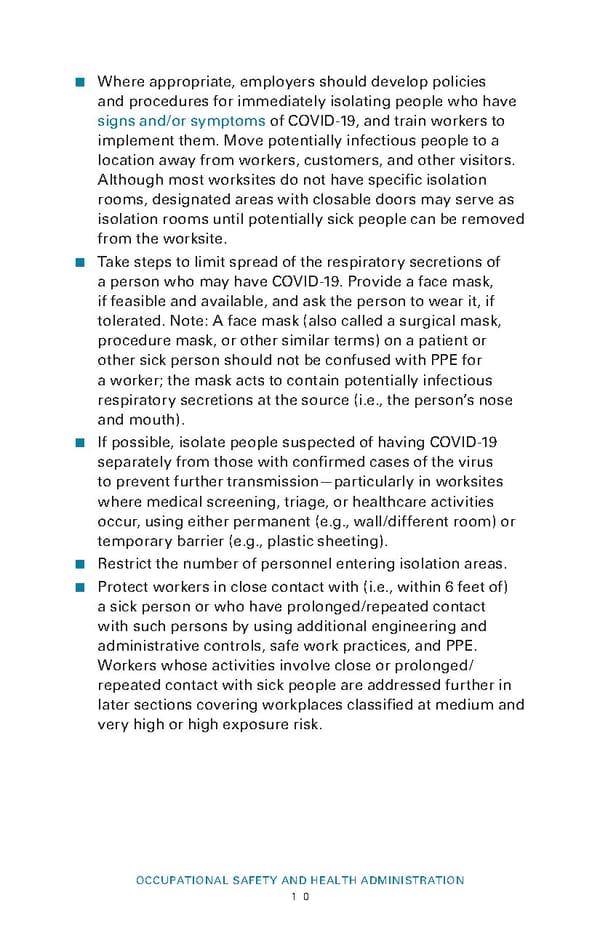■ Where appropriate, employers should develop policies and procedures for immediately isolating people who have signs and/or symptoms of COVID-19, and train workers to implement them. Move potentially infectious people to a location away from workers, customers, and other visitors. Although most worksites do not have specific isolation rooms, designated areas with closable doors may serve as isolation rooms until potentially sick people can be removed from the worksite. ■ Take steps to limit spread of the respiratory secretions of a person who may have COVID-19. Provide a face mask, if feasible and available, and ask the person to wear it, if tolerated. Note: A face mask (also called a surgical mask, procedure mask, or other similar terms) on a patient or other sick person should not be confused with PPE for a worker; the mask acts to contain potentially infectious respiratory secretions at the source (i.e., the person’s nose and mouth). ■ If possible, isolate people suspected of having COVID-19 separately from those with confirmed cases of the virus to prevent further transmission—particularly in worksites where medical screening, triage, or healthcare activities occur, using either permanent (e.g., wall/different room) or temporary barrier (e.g., plastic sheeting). ■ Restrict the number of personnel entering isolation areas. ■ Protect workers in close contact with (i.e., within 6 feet of) a sick person or who have prolonged/repeated contact with such persons by using additional engineering and administrative controls, safe work practices, and PPE. Workers whose activities involve close or prolonged/ repeated contact with sick people are addressed further in later sections covering workplaces classified at medium and very high or high exposure risk. OCCUPATIONAL SAFETY AND HEALTH ADMINISTRATION 10
 Guidance on Preparing Workplaces for COVID-19
Page 11 Page 13
Guidance on Preparing Workplaces for COVID-19
Page 11 Page 13